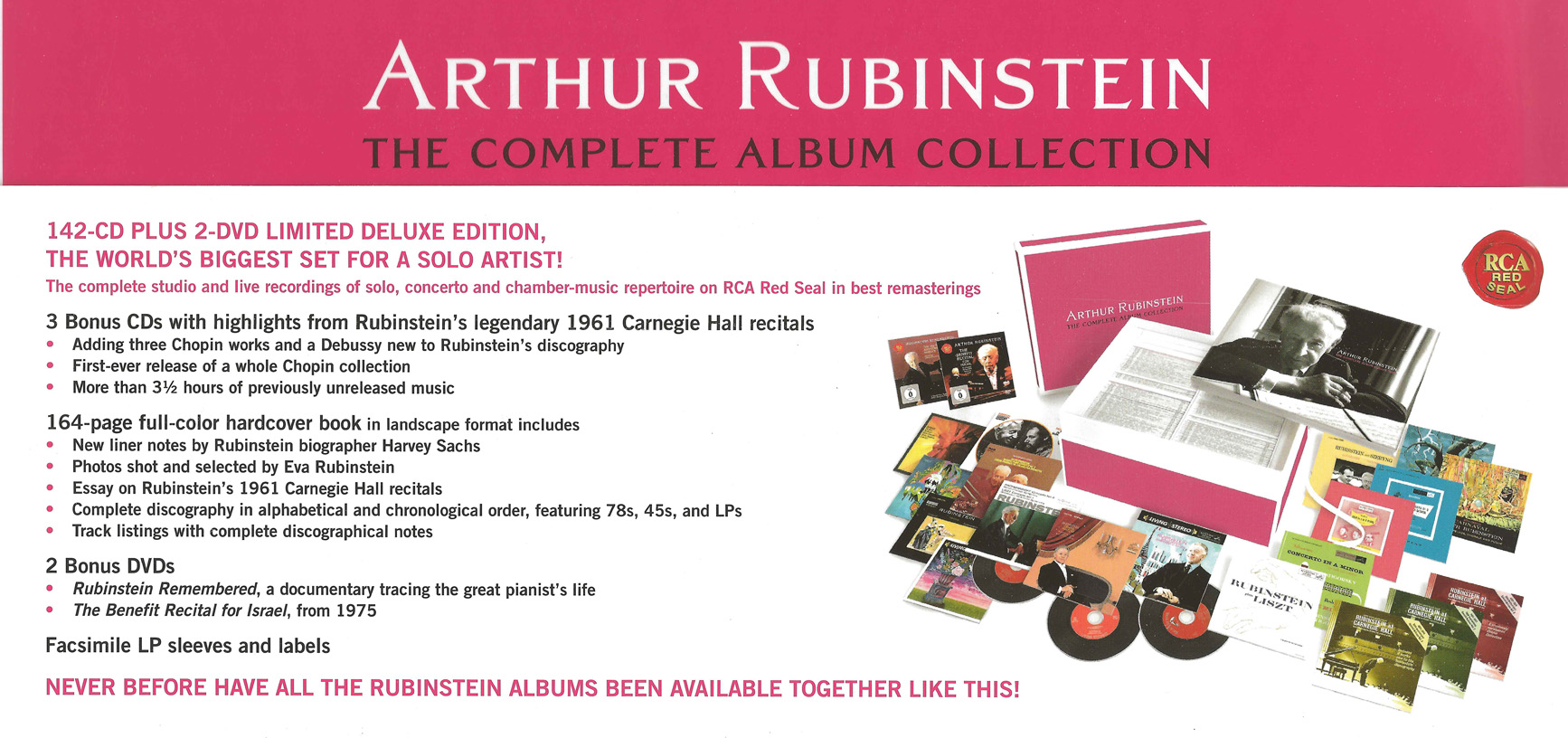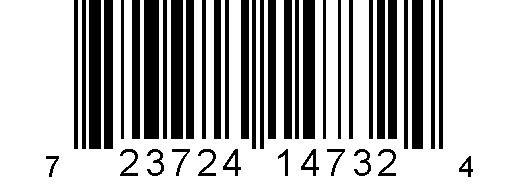Piano Music by Maurice Ravel
Arthur Rubinstein
Media Review / Listening Diary 2014-12-27
2014-12-27 — Original posting
2016-07-31 — Brushed up for better readability
Table of Contents
Rubinstein’s Recorded French Solo Repertoire:
Piano Music by Maurice Ravel (1875 – 1937)
Arthur Rubinstein‘s solo repertoire (as included in “Arthur Rubinstein —The Complete Album Collection”, i.e., recorded though his exclusive contract with RCA/Victor) features a limited selection of works by Chabrier, Fauré, Milhaud, and Poulenc (see my “Listening Diary 2014-04-30“), about half an hour of music by Maurice Ravel (see below), as well as works by César Franck and Claude Debussy (both yet to be discussed). As Rubinstein only played and recorded a limited number of compositions from the 20th century, the section “Ravel” isn’t very big. For the most part, it consists of “Valses nobles et sentimentales”, plus two small works that he must have used as encores.
All these pieces have also been recorded by Walter Gieseking (1895 – 1956). The latter is a pianist with a well-known affinity towards French piano music (he was born and brought up in Lyon).
The CDs
Here are the CDs that I’m talking about:
Arthur Rubinstein Collection, CDs #6 – 10

Arthur Rubinstein — The Complete Album Collection
CDs #6 – 10: The Early Recordings 1931 – 1939
Arthur Rubinstein
SONY Classical 88691936912 (142 CDs / 2 DVDs, mono / stereo); ℗ / © 2011
Documentation 162 pp., track listing on CD sleeve

Arthur Rubinstein Collection, CD #89
Arthur Rubinstein — The Complete Album Collection
CD #89: Ravel: Valses nobles et sentimentales, La vallée des cloches; Poulenc: Mouvements perpétuels, 2 Intermezzi; Fauré: Nocturne; Chabrier: Scherzo-Valse
SONY Classical 88691936912 (142 CDs / 2 DVDs, mono / stereo); ℗ / © 2011
Documentation 162 pp., track listing on CD sleeve

Arthur Rubinstein Collection, CD #131
Arthur Rubinstein — The Complete Album Collection
CD #131: Schumann: Symphonic Etudes op.13; Ravel: Forlane; Debussy: La plus que lente; Albéniz: Navarra
SONY Classical 88691936912 (142 CDs / 2 DVDs, mono / stereo); ℗ / © 2011
Documentation 162 pp., LP liner notes on back of CD sleeve

Walter Gieseking (1951)
Ravel: Piano Works
Allegro CDO 3020 (2 CDs, mono); ℗ 1972 / © 2001
Booklet: 4 pp. English

Miroirs (1904 – 05)
From the suite “Miroirs” (Mirrors), Arthur Rubinstein only recorded the last piece, No.5, “La vallée des cloches” (The Valley of the Bells), as part of his LP “A French Program” (CD #89 in “Arthur Rubinstein —The Complete Album Collection”). That’s a recording which Rubinstein made in 1963. It’s a short, but very nice piece, 5’48” in Rubinstein’s interpretation (must have been one of his encores). I have the same piece also as part of Walter Gieseking‘s double-CD set with music by Maurice Ravel, recorded in 1951. Here, the same piece takes 4’59”: Gieseking plays it substantially faster.
La vallée des cloches
The liner notes to the Gieseking CD set are raving about the artist’s ability produce refinement in the pedaling, creating an incomparable richness in sound, especially in the ppp area and beyond. I have also encountered recent, very positive comments about Gieseking’s Ravel-recordings. In this case, one can certainly call his interpretation “atmospheric”, the piece sounds veiled, blurred. However, I miss the bells! Rubinstein is very much different. Here, the piano sounds more sonorous, singing, and I feel it much easier to picture various bells throughout the piece. Already in the first bars
Gieseking’s right hand (in my opinion) does not sound “very sweet and without accentuation”. Gieseking also plays faster than the 1/4 = 50 given in the score, i.e., those notes are far too prominent and not very subtle. In contrast, Rubinstein (I think) fulfills the annotation much better. He takes the piece slightly below the given metronome value. I definitely prefer Rubinstein’s interpretation. This may be unfair, as I don’t know how much of Gieseking’s interpretation is lost in this mono recording; the sound in Rubinstein’s recording is excellent. Gieseking’s CD set includes the complete Suite “Miroirs” (23’55”).
Valses nobles et sentimentales (1906 – 11)
Ravel’s Valses nobles et sentimentales is the only complete suite by Ravel which Arthur Rubinstein recorded as part of his LP “A French Program” (again, CD #89 in “Arthur Rubinstein —The Complete Album Collection”, recorded in 1963). The entire suite is of course also included with Walter Gieseking‘s collection of Ravel’s piano works, recorded 1951:
- Modéré – très franc (1/4 = 176)
Rubinstein: 1’25” (1/4 = 186) — Gieseking: 1’12” (1/4 = 195) - Assez lent – avec une expression intense (1/4 = 104)
Rubinstein: 2’14” (1/4 = 102) — Gieseking: 1’37” (1/4 = 124) - Modéré
Rubinstein: 1’36” — Gieseking: 1’24” - Assez animé (3/4 = 80)
Rubinstein: 1’17” (3/4 = 74) — Gieseking: 0’54” (3/4 = 82) - Presque lent – dans un sentiment intime (1/4 = 96)
Rubinstein: 1’17” (1/4 = 94) — Gieseking: 1’06” (1/4 = 88) - Assez vif (3/4 = 100)
Rubinstein: 0’39” (3/4 = 96) — Gieseking: 0’38” (3/4 = 98) - Moins vif
Rubinstein: 2’35” — Gieseking: 2’23” - Epilogue: lent (1/4 = 76)
Rubinstein: 4’18” (1/4 = 68) — Gieseking: 3’11” (1/4 = 88)
The Interpretations
The measured metronome numbers are very approximate only. Both artists play with lots of rubato. Let me only characterize the two interpretations with a few words:
- in Gieseking‘s interpretation, the focus is on the impressionist atmosphere, achieved with subtle pedaling, creating a somewhat “blurred” sound / articulation. Some other sections (e.g., in the first valse) sound like a grotesque caricature of a Viennese waltz. However, mostly, Gieseking’s version does not really offer a “waltz feeling”.
- Rubinstein focuses on the waltz aspect. He uses (often quite extreme) swinging articulation / agogics to create a wide variety of true waltz expressions. It’s much less a caricature than with Gieseking.
The two interpretations are substantially different. Both are convincing in their way, though to me personally, Rubinstein’s recording sounds more appealing, overall. That’s of course in parts due to the superior sound.
Le Tombeau de Couperin (1914 – 17)
This is a suite composed in the memory of six French composers who died in the First World War. It’s in the form of a French baroque suite (Prélude — Fugue — Forlane— Rigaudon — Menuet — Toccata), buit not based on direct baroque models, other than though the form of the suite, and by adopting certain musical “language elements”. The exception is the Forlane, which is adapting melodies from the fourth suite in Couperin’s Concerts Royaux. An interesting detail about the Forlane is that Ravel explicitly demands that the small notes (ornaments) be played on the beat, as in baroque practice for acciaccaturas. Rubinstein recorded the Forlane (definitely one of his encores) twice, first in 1934 (4’49”), and later again, in 1961 (5’18”), in a live recording from Carnegie Hall. Gieseking has recorded the complete Suite (25’31”), again in 1951. The Forlane in his interpretation takes 5’47”.
The Interpretations
Gieseking’s interpretation sounds more dry, particularly at the beginning, where Gieseking (tribute to the baroque models?) uses less pedal than Rubinstein. Gieseking’s interpretation is a tad faster than Rubinstein’s. The timing differences mostly stem from the fact that in the early recording, Rubinstein only plays the second (out of 5) repeats, whereas in the more recent recording from Carnegie Hall he omits repeats 1 and 3. Rubinstein’s playing is more legato, with excellent sonority.
Overall, I again prefer Rubinstein’s interpretation(s). Some of this may be attributed to recording deficiencies, though even Rubinstein’s early recording has better sonority and better sound, is more singing. It’s hard to tell whether Ravel’s prescription regarding the acciaccaturas is followed: these are performed very rapidly by both artists. “On the beat” of course does not imply that they should be played with an accent. Therefore, often these ornaments sound like preceding the beat, with the latter being very slightly delayed. Last remark: Rubinstein takes more freedom in his agogics, which makes his interpretation sound more lively, more “breathing” than Gieseking’s.
Listening Diary Posts, Overview









